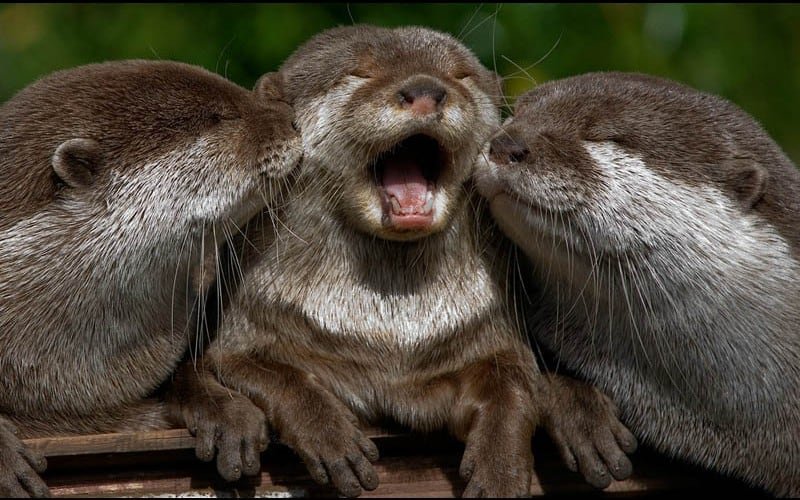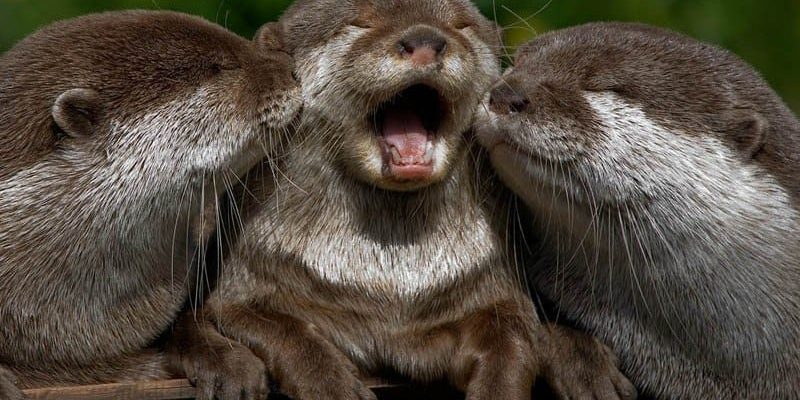
Otters belong to the family *Mustelidae*, which also includes weasels, badgers, and ferrets. There are 13 different species of otters found across the globe, each with its own quirks and habitats. Let’s explore some of these incredible creatures and uncover ten fascinating facts that will make you appreciate otters even more.
1. Otters Are Master Swimmers
Otters are exceptionally skilled swimmers, and it all comes down to their bodies. They have streamlined shapes that enable them to glide through the water with ease. Their webbed feet act like paddles, and their powerful tails help propel them forward. If you’ve ever watched an otter swim, you might notice how gracefully they move, almost as if they’re dancing in the water.
These aquatic mammals can hold their breath for up to five minutes while diving. They typically hunt for fish, crabs, and other marine life underwater. Imagine holding your breath for that long while searching for a meal—pretty impressive, right? Otters are also known to use tools. For example, they’ll often crack open shellfish by using rocks, showcasing not only their intelligence but also their resourcefulness.
2. They Have a Unique Social Structure
Otters are social animals and often live in groups called rafts. These rafts typically consist of 10 to 20 otters, though they can sometimes be larger. Living in a group helps them stay safe from predators and aids in hunting. The bond within these groups is strong; otters groom each other and even hold paws while sleeping to prevent drifting apart.
You might be wondering about the hierarchy in these rafts. Otters have a social structure where the dominant otter often leads. This leader plays a crucial role in finding food and making decisions for the group. It’s heartwarming to see how they care for one another while forging strong family bonds, just like we do with our loved ones.
3. Otters Use Tools
One of the standout traits of otters is their ability to use tools. This behavior is quite rare in the animal kingdom, making otters even more fascinating. They often use rocks to crack open shellfish, which they hold on their bellies while floating on their backs. Imagine them floating lazily, enjoying a snack just like you would while munching popcorn at the movies.
This tool use isn’t just a fun fact; it shows their intelligence and adaptability. Some otters have even been observed using sticks or other objects to assist in hunting or foraging. This level of problem-solving is a significant indicator of their cognitive abilities, which is something that we often equate with higher mammals.
4. They Have Distinctive Fur
Otters are known for their luxurious coats, which serve several important purposes. Their fur is specially adapted to keep them warm in cold waters. With up to a million hair follicles per square inch, otter fur traps air, keeping them insulated. If you ever get a chance to feel their fur, you’ll notice how soft it is—almost like a fluffy cloud.
Interestingly, otters don’t have blubber like many marine mammals. Instead, they rely on their dense fur and social behavior—often curling up together—to maintain their body heat. This adaptation allows them to thrive in various climates, from the chilly waters of the Arctic to the warmer coasts of the tropics.
5. Otters Communicate in Unique Ways
Otters are quite vocal and use a variety of sounds to communicate, ranging from chirps to growls. You might hear them making a range of noises that help convey different messages within their group. For instance, they might make high-pitched whistles when excited or softer sounds when trying to soothe their young.
Beyond vocalizations, otters also use body language. They may engage in playful behaviors, like chasing each other, to bond and establish social connections. Watching them play can be like seeing a group of kids at a playground—full of energy and joy. These interactions are crucial for their social development, just as play is important for human children.
6. They Play for a Purpose
Speaking of play, otters are known for their playful nature. They engage in activities like sliding down mud or snowbanks, wrestling with one another, or even playing with objects they find in the water. This playful behavior isn’t just for fun; it serves several important functions.
Play helps otters develop their hunting skills and strengthens social bonds within the group. It’s also believed to be a way for young otters to learn how to navigate their environment. Just like children learn through play, otters are honing their skills while having a blast. Watching them can bring a smile to anyone’s face, reminding us of the joy that comes from simple pleasures.
7. They Have a Diverse Diet
What do otters eat? Well, their diet can vary significantly based on their species and habitat. Many otters primarily consume fish, while others may indulge in crustaceans, mollusks, amphibians, and even small mammals. Some otters are known to eat up to 15% of their body weight daily!
Imagine an otter diving underwater, using its keen eyesight to spot a fish, then swiftly going after it. Their hunting techniques can be fascinating to watch. Some species even hunt cooperatively, working together to catch prey. This teamwork not only makes feeding more effective but also showcases their intelligence and social cohesion.
8. Otters Are Important for Their Ecosystems
Otters play a critical role in their environments, acting as both predators and indicators of ecosystem health. By keeping fish populations in check, they help maintain a balanced aquatic ecosystem. Their presence signifies a healthy habitat, as they thrive in clean, diverse environments.
When otters are absent from an ecosystem, it can lead to overpopulation of certain fish species. This imbalance can disrupt the entire waterway, impacting not just aquatic life, but also the larger ecosystem. Protecting otters ultimately means safeguarding their habitats and ensuring a healthier planet.
9. They Are Endangered in Many Areas
Sadly, otters face numerous threats, leading to population declines in several species. Habitat loss, pollution, and hunting have significantly impacted their numbers. For instance, the sea otter, once pushed to the brink of extinction due to the fur trade, is still recovering and is classified as a threatened species in many areas.
Conservation efforts are essential to ensure that future generations can enjoy these amazing creatures. Various organizations work tirelessly to protect their habitats, reduce pollution, and raise awareness about the importance of otters in our ecosystems. Supporting these efforts can make a real difference in the survival of otters and other wildlife.
10. Otters Have Unique Adaptations
Each otter species has unique adaptations that allow them to thrive in their specific environments. For example, the giant river otter has a long, slender body and webbed feet that make it an excellent swimmer, while the North American river otter has a thick layer of fat to keep warm in cold waters.
These physical traits are a testament to how well-adapted otters are to their surroundings. They remind us that every species has its own story of survival and adaptation. Understanding these differences can enhance our appreciation for the biodiversity that exists in our world.
In conclusion, otters are not just cute and playful animals; they are fascinating creatures with a wealth of behaviors and adaptations that make them special. From their masterful swimming skills to their role in ecosystems, these animals deserve our admiration and protection. The next time you encounter an otter, whether in a documentary or a visit to the zoo, think about the incredible life they lead and how you can contribute to their conservation. By understanding and appreciating otters, we can help ensure that these delightful creatures continue to thrive in the wild.

